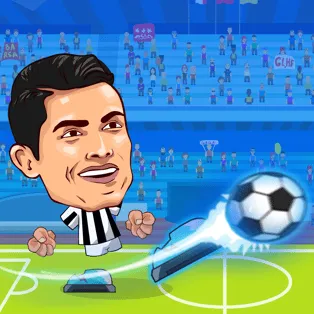The Rising of the Shield Hero has become one of the most popular isekai manga series in recent years, captivating readers with its unique take on the “transported to another world” genre. This article will dive deep into the key moments that have made this manga a fan favorite, exploring the storytelling, character development, and cultural impact that have contributed to its success.
The Premise: A Hero’s Betrayal and Redemption
The Rising of the Shield Hero manga begins with a premise that immediately sets it apart from other isekai stories. Our protagonist, Naofumi Iwatani, is summoned to a fantasy world along with three other young men to serve as the legendary Cardinal Heroes. Each hero is granted a powerful weapon – a sword, spear, bow, or shield – to combat the waves of calamity threatening the kingdom.
However, Naofumi’s journey takes a dark turn when he is falsely accused of sexual assault by Princess Malty, the very person who was supposed to be his ally. This betrayal leaves him ostracized, penniless, and filled with anger and distrust. It’s a shocking twist that subverts the typical “chosen one” narrative and sets the stage for Naofumi’s struggle to clear his name and find his place in this hostile new world.
The Impact of Betrayal
The false accusation against Naofumi serves as a pivotal moment in the manga, shaping his character and the overall tone of the story. It raises thought-provoking questions about trust, justice, and the abuse of power. This dark beginning resonates with many readers, as it explores themes of unfair treatment and the challenge of maintaining one’s integrity in the face of overwhelming adversity.
Character Growth and Relationships
One of the strengths of The Rising of the Shield Hero Manga is its focus on character development, particularly for Naofumi. His journey from a bitter, distrustful outcast to a true hero is filled with compelling moments that showcase his growth.
Naofumi’s Transformation
Early in the manga, Naofumi is forced to rely on unconventional methods to survive and grow stronger. He turns to merchant skills and crafting, areas often overlooked in traditional fantasy stories. This pragmatic approach not only sets him apart from the other heroes but also demonstrates his resourcefulness and determination.
As the story progresses, we see Naofumi slowly learning to trust again, primarily through his relationships with Raphtalia and Filo. These bonds help soften his hardened heart and remind him of the importance of compassion and loyalty.
The Power of Companionship
The relationship between Naofumi and Raphtalia is particularly noteworthy. Raphtalia, a demi-human slave girl whom Naofumi initially purchases out of necessity, becomes his most loyal companion and a powerful warrior in her own right. Their evolving dynamic, from master and slave to trusted partners, is a central element of the manga’s emotional core.
Similarly, the addition of Filo, a filolial queen who imprints on Naofumi as a father figure, brings moments of levity and warmth to the story. These relationships not only provide support for Naofumi but also serve as a mirror for his own growth and changing worldview.
Worldbuilding and Fantasy Elements
The Rising of the Shield Hero manga excels in creating a rich and detailed fantasy world. The author, Aneko Yusagi, has crafted a universe with its own complex systems of magic, politics, and mythology.
The Shield’s Unique Powers
One of the most intriguing aspects of the manga is the exploration of Naofumi’s shield abilities. Unlike traditional fantasy heroes who rely on offensive weapons, Naofumi must find creative ways to use his defensive tool. The shield’s ability to absorb and copy the properties of various materials leads to some of the most innovative and exciting moments in the series.
Readers are treated to scenes where Naofumi unlocks new shield forms, each with unique abilities that often subvert expectations. From the Rope Shield that allows him to bind enemies to the Shield of Rage that channels his anger into power, these developments keep the action fresh and unpredictable.
The Waves of Calamity
The recurring Waves of Calamity serve as both a plot device and a world-building element. These catastrophic events not only provide a sense of urgency to the heroes’ mission but also offer opportunities to explore different regions and cultures within the fantasy world. Each Wave brings new challenges and revelations, expanding the scope of the story and deepening the lore.
Themes and Social Commentary
Beyond its fantasy trappings, The Rising of the Shield Hero manga tackles several thought-provoking themes that resonate with readers.
Justice and Prejudice
The manga doesn’t shy away from exploring the darker aspects of society. Naofumi’s experience with false accusations and the subsequent treatment he receives highlight issues of prejudice and the flaws in systems of justice. The story raises questions about how society treats the accused and the long-lasting impact of false allegations.
Power and Corruption
As Naofumi navigates the political landscape of his new world, the manga delves into themes of power abuse and corruption. The actions of characters like Princess Malty and her father, the king, serve as commentary on how those in positions of authority can manipulate systems for their own benefit.
Redemption and Second Chances
At its core, therisingoftheshieldhero.site is a story about redemption. Naofumi’s journey from a bitter, angry young man to a true hero who protects the weak is a powerful narrative arc. The manga explores the idea that even in the darkest moments, there is potential for growth and change.
Art Style and Visual Storytelling
The manga’s art, adapted from Aneko Yusagi’s light novels by Aiya Kyu, plays a crucial role in bringing the world of The Rising of the Shield Hero to life. The detailed character designs, dynamic action scenes, and expressive emotions contribute significantly to the reader’s immersion in the story.
Particularly noteworthy are the visual representations of Naofumi’s various shield forms and the monsters he encounters. These designs are often intricate and imaginative, adding depth to the fantasy elements of the world.
Impact on the Manga Industry and Fan Culture
The Rising of the Shield Hero has made a significant impact on the manga and anime industry since its debut. Its popularity has led to multiple adaptations, including a successful anime series that has brought the story to an even wider audience.
The manga has also influenced the isekai genre as a whole, inspiring other creators to explore darker, more complex themes within the “transported to another world” framework. Its success has shown that readers are receptive to isekai stories that challenge conventions and tackle difficult subjects.
In terms of fan culture, The Rising of the Shield Hero has spawned a dedicated and passionate fanbase. Online communities discuss theories, create fan art, and engage in cosplay, demonstrating the deep connection many readers feel to the characters and world of the manga.
Conclusion: A Shield Against Conventions
The Rising of the Shield Hero manga has carved out a unique place in the isekai genre through its compelling characters, intricate worldbuilding, and willingness to explore complex themes. From Naofumi’s initial betrayal to his journey of growth and redemption, the series offers readers a rich and emotionally resonant story that goes beyond typical fantasy tropes.
As the manga continues to unfold, it remains a testament to the power of resilience, the importance of trust, and the potential for change. Whether you’re a long-time fan or new to the series, The Rising of the Shield Hero offers a shield-wielding adventure that’s well worth exploring.
We’d love to hear about your experiences with The Rising of the Shield Hero manga. What moments stood out to you? How has Naofumi’s journey resonated with you? Share your thoughts and join the discussion in the comments below!





























